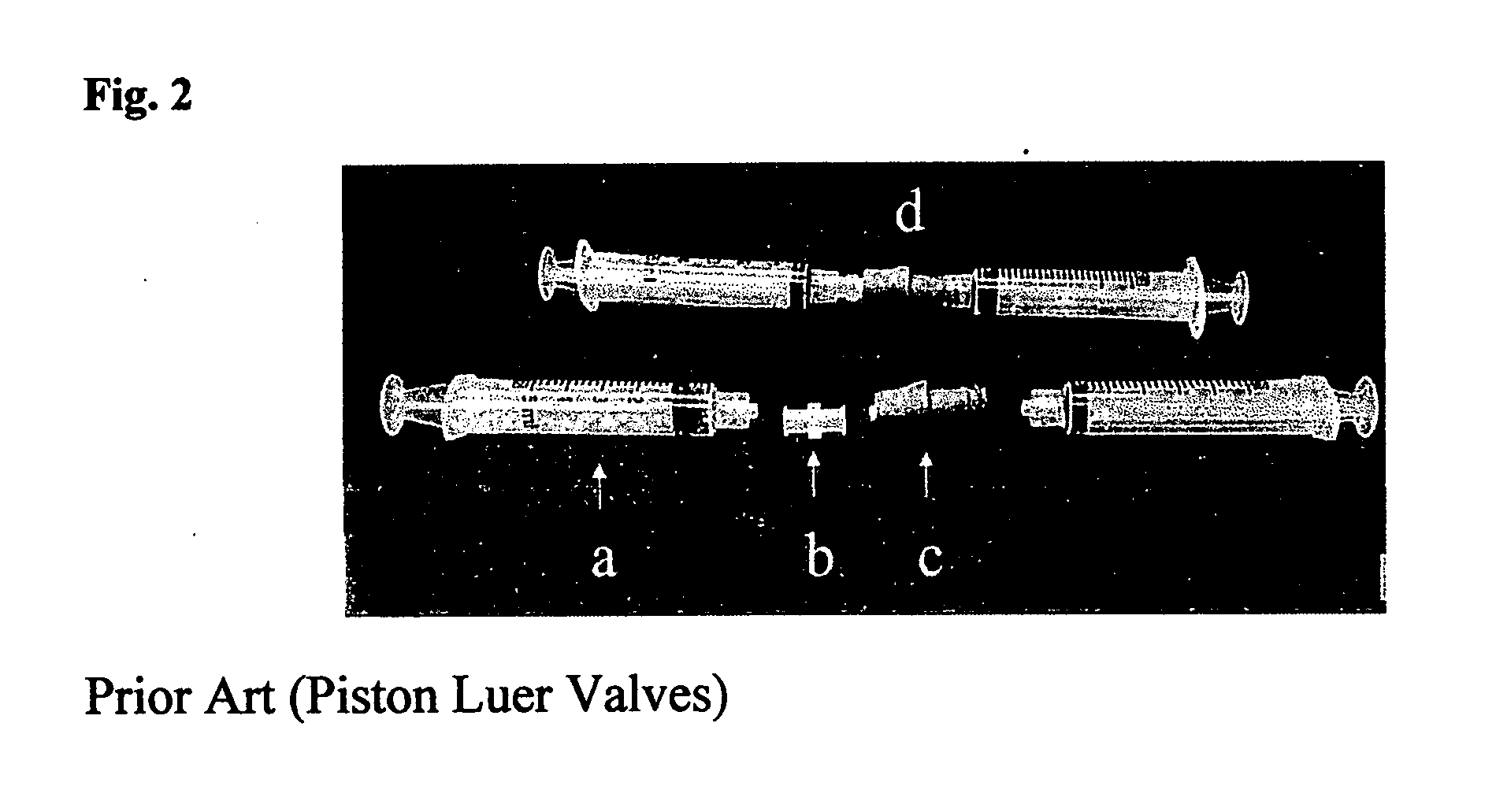However, the movement of potentially deadly microorganisms into patient's interior through such access devices and systems has long been a major problem.
While most MTEs are without consequence, each MTE poses a risk of causing clinical
bacteremia which is associated with severe morbidity, increased hospital expense and / or death.
Microorganisms are becoming more resistant to
antibiotics and patients are often living longer with more prosthetic components and therefore the risk posed by MTEs to patients will likely continue to increase over the next few decades.
Throughout the sequence of procedures associated with an access event there are many risks of contact or droplet nuclei
contamination which can contribute to MTEs.
Because the access procedure is so common and simple, the risk associated with entry into fluid connection with a patient's vascular system has often been overlooked.
Presently the risk to hospitals and patients is a substantial function of diligence of the employee performing the accesses and this diligence is largely uncontrollable.
When substantial morbid and mortal risk in association with a high number of routine procedures is defined as a primary function of the diligence of a
heterogeneous population of employees, a substantial degree of unnecessary injury to patients will inevitably result The present inventor contends that it is unacceptable for hospitals to perform hundreds of thousands of accesses to patient's vascular system without controlling all of the controllable risks associated with the access procedure.
Given the complexity defining the risks associated with a given access event, the addition of new uncontrolled risk associated with a less than diligent worker in the performance of a diligence dependent access procedure is unacceptable.
In many environments and medical settings cleansing immediately prior to access is not reliably performed, therefore even if it is possible to comprehensively clean an access device and thereby achieve low the MTE% and MTE Magnitude values for a given device in a carefully performed clinical trail, this approach would not reflect the likely real world
impact of that access device on global mortality.
While a missed cleaning event prior to access may have little effect on one
device type (other than perhaps to cause a single MTE event to occur during the access which occurred without the cleansing), the same single missed cleaning event may severely contaminate the interior of another
device type.
For example, the interstitial dead spaces of open
piston valves, which is juxtaposed the fluid opening, are not accessible to cleaning.
For this reason, even a single event of failure to cleanse the access surface of an open
piston valve prior an access event may contaminate the incubating interstitial spaces of an open
piston valve early in its use and therefore may potentially cause a
rapid rise in both MTE% and MTE Magnitude as the organisms incubate inside the valve over the next 72 hours (long after the initial uncleansed access occurred).
Conventional access device designs in wide use today which exhibit a functional propensity for irreversible incubation will not stand the test of time.
Of course the value R for any access device cannot be known with the evidence available today and even for the most dangerous access devices, R will be extremely small.
For this reason very small difference in MTE% and / or MTE Magnitude between widely deployed devices can translate into major differences in access device related mortality.
Also because any R is vastly amplified in patients with low WBC or when the
organism is
highly pathogenic and resistant (such as
Vancomycin Resistant Staphlococcus Aureus), a modestly inferior design may appear quite safe in one
population but be highly dangerous to other populations.
Once displaced, the
bacteria are then readily carried by the
solid member or by fluid flow into the patient where they can cause death especially in patients with low
white blood cell counts or internal prosthetic devices.
Each time a conventional access device is entered from the outside the risk to the patient is increased.
In an example, access systems which comprise the luer receiving hubs of IV catheters and Y sites are particularly vulnerable because they may be entered with external male luers up to 10 or more times a day.
The problem with at least some of the piston luer valves has become an increasingly recognized problem with published outbreaks.
Another problem relates to
contamination and / or
colonization of implements (such as the luer tip) between insertions into the access device.
As is evident from this discussion, the problem is profound because the system interconnects between the implement, the cover for the implement, and the access device.
As discussed in U.S. Pat. No. 6,171,287 of the present inventor (the contents of which are incorporated by reference as if completely disclosed herein), structural complexity as a function of spaces between internal
moving parts, and especially exposed crevices which connect to internal rigid components can greatly increase the risk of
colonization.
However, even with the
elimination of these crevices, bacteria can still invade access systems.
However this approach is often less than optimally effective because
biofilm, indwelling fluid, or distance may protect the
organism from
diffusion of the agent.
Unfortunately, as is evident from a review of FIG. 1, the circumferential crevice of piston luer valves of the type discussed above is not accessible to scrubbing.
Furthermore, this approach is unreliable as the healthcare worker may be distracted, or operating in an emergent environment with other priorities.
The education approach does not solve the inherent
weakness of the access device and places the health of the patient at the mercy of the unpredictable diligence of the potentially highly distracted healthcare worker.
One of the primary problems associated with access devices such as the luer valve is the failure of healthcare workers to scrub or otherwise prep the surface of the septum.
 Login to View More
Login to View More  Login to View More
Login to View More 


